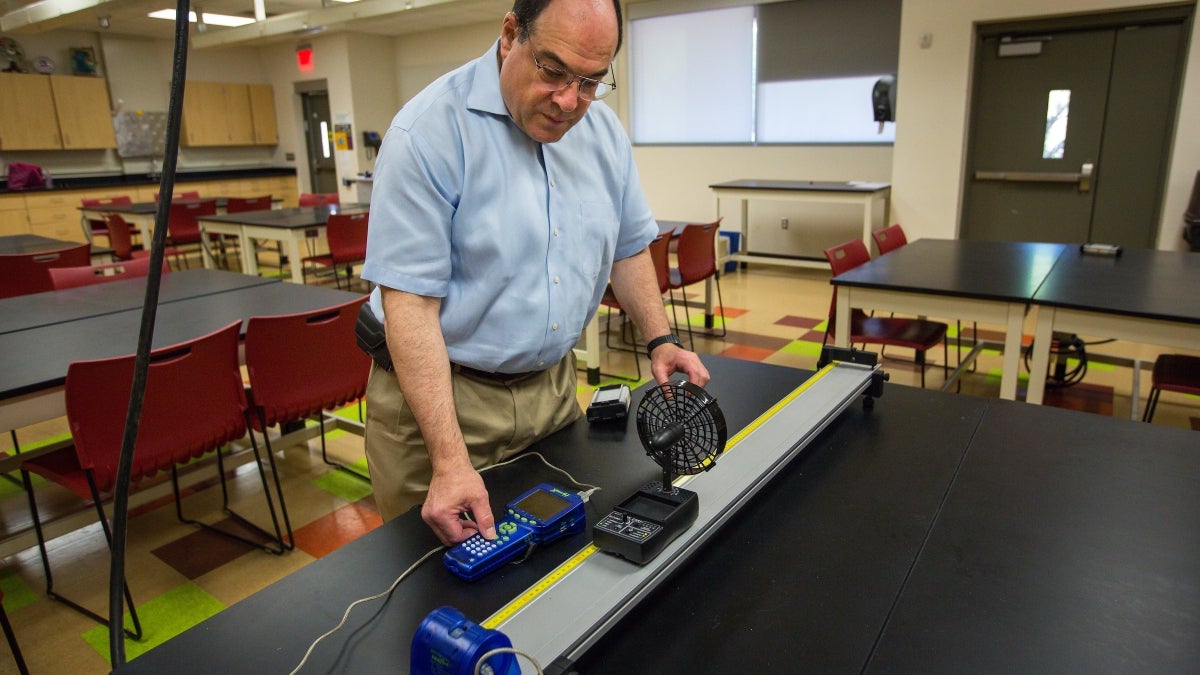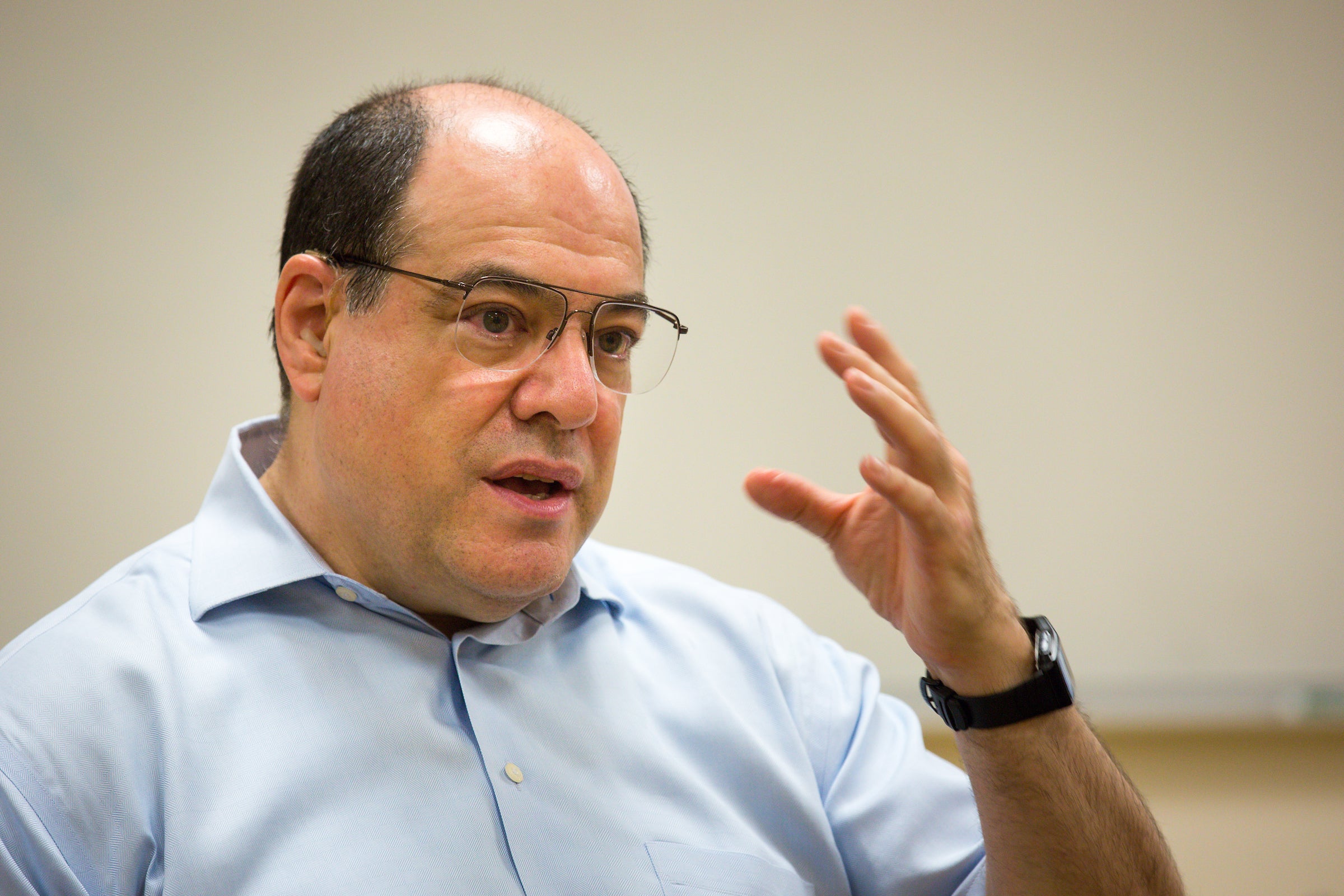Kids love to do experiments. When David Meltzer taught middle-schoolers, they especially enjoyed making a generator out of copper wire.
But nothing extinguishes that joy of discovery more than teachers who are unenthusiastic about teaching science because they don’t know the subject matter.
And that’s where Meltzer is working to make a difference, by teaching future teachers how to do experiments, so they learn the activity as well as the content.
“The method that has been followed for years is that you learn a little bit about the subject, you get an acquaintanceship, and you try to teach it,” said Meltzer, who started his career as a theoretical physicistMeltzer also is a consultant to the American Physical Society and the Physics Teacher Education Coalition and senior consultant to the National Task Force on Teacher Education in Physics. and is now an associate professor in the Mary Lou Fulton Teachers College.
“It’s a myth that students will learn very much if the teacher doesn’t know the material.”
Meltzer, who works at the Polytechnic campus at Arizona State University, just completed a four-year project funded by the National Science Foundation to improve science teaching in grades kindergarten through eight by using classroom activities. He said that typically, K-8 teachers aren’t required to have specialized science training, even though they're teaching physics concepts including mechanics, Newton’s laws of motion, electricity and magnetism, in physical science classes.
“You don’t teach physical science by standing at a blackboard and lecturing to students. That’s not effective. You get them involved in carrying out investigations, solving problems, doing experiments,” he said.
Some of the $300,000 grant was spent on equipment that students use for experiments. They mount little carts on tracks to study mechanics, use ultrasonic motion detectors to measure velocity and acceleration, and create magnets out of coiled copper wire.
Meltzer has taught physical science to the middle schoolers at the ASU Preparatory Academy on the Polytechnic campus, and he said all students love to see what they can build.
“We created a power generator, and you scale that up and it’s the Hoover Dam and you light up a city,” he said.
A one-semesterThe class is SCN 250, “physical science by inquiry.” class isn’t enough to completely prepare future teachers to teach physical science but they get good experience with how to incorporate the activities.
“They’re learning both how to teach, very hands-on, and they’re learning the science content so they aren’t trying to teach something they don’t really understand — which is the big problem in all science education, and we're behind other countriesAmerican 15-year-olds’ science scores ranked 24th in the world in the 2012 Program for International Student Assessment..”
David Meltzer won a grant to improve physics instruction for future teachers at the Polytechnic campus. Photo by Charlie Leight/ASU Now.
Meltzer also is an expert in the historySome of the grant money was spent on adding material to a web site that chronicles the history of science education. of teaching physics. He said that dating back to the 1880s, when physics was called “natural philosophy,” teachers knew that students learned best when they did experiments.
“Teachers back then at the high school and college level made tremendous efforts to expand activity-based teaching but they largely did not succeed,” he said, because by the 1940s, many more Americans started attending high school and the demand for teachers exploded.
“The lecture method took over as the primary method of teaching and the experiments were very prescriptive, like following a cookbook,” he said.
The United States saw a burst of interest in teaching science after the Russians beat the United States into space with Sputnik in 1957 and again in the last few years with the focus on STEMscience, technology, engineering and math. But Meltzer said that eagerness has never translated to better teacher training.
“The Next Generation Science StandardsThe Next Generation Science Standards is an updated set of learning goals for kindergarten through 12th grade. The standards were developed by 26 states, including Arizona, but Arizona has not adopted the standards. are very ambitious but from my standpoint, it will fall short because it’s not linked to a realistic effort to improve the education of science teachers, or, critically, K-8 teachers, where the foundations are set.”
Top photo: David Meltzer shows how he teaches students to use an ultrasonic motion detector to measure velocity on a low-friction track. Photo by Charlie Leight/ASU Now.
More Science and technology

ASU and Deca Technologies selected to lead $100M SHIELD USA project to strengthen U.S. semiconductor packaging capabilities
The National Institute of Standards and Technology — part of the U.S. Department of Commerce — announced today that it plans to award as much as $100 million to Arizona State University and Deca…

From food crops to cancer clinics: Lessons in extermination resistance
Just as crop-devouring insects evolve to resist pesticides, cancer cells can increase their lethality by developing resistance to treatment. In fact, most deaths from cancer are caused by the…

ASU professor wins NIH Director’s New Innovator Award for research linking gene function to brain structure
Life experiences alter us in many ways, including how we act and our mental and physical health. What we go through can even change how our genes work, how the instructions coded into our DNA are…

